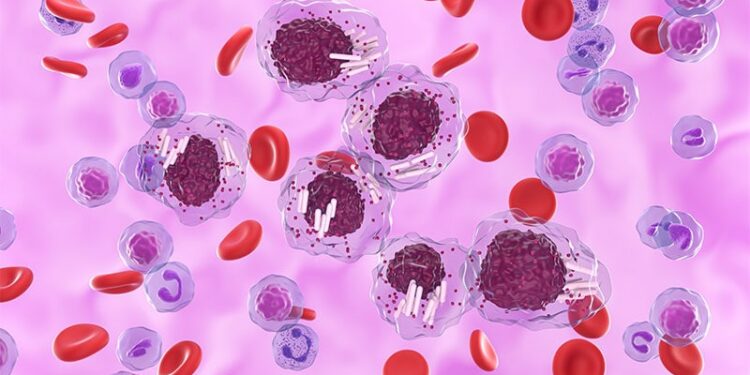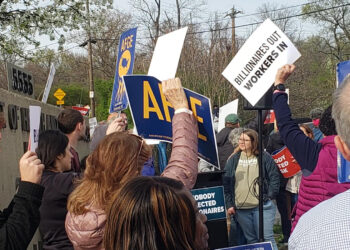[ad_1]

Despite her specialized focus on treating lymphoid malignancies, Suchitra Sundaram, MD, said that she feels most driven by the diversity of her experiences caring for patients and researching subtypes of disease.
“Different age groups, different complexities, and also socioeconomic strata where we’re able to help some of these patients who would otherwise not be able to seek care in time, get into clinical trials to be able to get cured of their lymphomas, that part of my work is the most gratifying,” said Sundaram, a clinical researcher and an assistant professor of hematology and medical oncology at The Tisch Cancer Institute at the Icahn School of Medicine at Mount Sinai in New York City.
Sundaram splits her time between the clinic and her research, which includes clinical trials, observational studies, and outcomes research. She has been involved with multiple trials of novel agents in chronic lymphocytic leukemia (CLL), including the phase 3 trial that examined adding venetoclax to ibrutinib and obinutuzumab in younger, untreated patients with CLL and the phase 1/2 trial that evaluated the novel Bruton tyrosine kinase (BTK) inhibitor pirtobrutinib in relapsed CLL.
Sundaram also has taken part in translational research, focused on drug resistance in CLL, with preclinical experiments showing the potential for a bromodomain protein inhibitor to bolster the oncogenic effects of venetoclax. In the future, she hopes to continue investigating novel drug combinations that help beat drug resistance in CLL.
In addition, she studies the outcomes of various lymphomas in the real world, outside of clinical trials. She has taken part in numerous multicentric collaborative studies of aggressive B-cell lymphomas, CLL, and lymphomas involving the central nervous system.
Path to Lymphoma Research
Sundaram, who grew up in Mumbai, India, became fascinated by human biology early in her college days and went on to attend medical school at Lokmanya Tilak Municipal Medical College, Mumbai, India, which is also a large tertiary care referral center. The center provides a high volume of care for complex and chronic hematology conditions, such as sickle cell anemia and thalassemia, including the treatment of many young children.
“I saw in real time, for the first time, a dedicated team of multidisciplinary experts providing comprehensive care in hematology. They would do newborn screening, penicillin prophylaxis, hydroxyurea therapy and make every effort to identify and treat early complications of sickle cell disease. And thanks to those efforts, the majority of those patients would survive into adulthood,” she said. “That really made a big impression on me.”
But it was the treatment of hematology malignancies that sparked a lifelong interest, Sundaram said, as she helped treat young adults with Burkitt lymphoma. “I was just struck very early on not only by the acuity of these illnesses but also patients’ recovery after chemotherapy,” she said.
That led her to pursue an international elective at Weill Cornell University and New York-Presbyterian, New York City, where she was exposed to the type of exciting advancements in hematology that can come from clinical research work. “I realized then I’d found my calling,” she said.
From there, she was bound for Cleveland, Ohio, where she completed her residency at the Cleveland Clinic Foundation and her fellowship in hematology and oncology at Case Western Reserve University, Cleveland, Ohio. Her first faculty position was at Roswell Park Comprehensive Cancer Center in Buffalo, New York, where she had a focus in lymphoid malignancies.
Swapna Thota, MD, an associate professor of hematology-oncology at The University of Tennessee Health Science Center, Memphis, Tennessee, worked with Sundaram at Roswell Park. It was a first job in hematology-oncology for both and they bonded over that.
Thota recalled that Sundaram would take what she saw during interactions with patients and use it to inform her research. “She would watch things in the clinic and take them back. For instance, some patients go through chemo fine, and others get complications. Why does that happen? She paid attention to the details, and it was how she formed her research questions,” Thota said.
Sundaram is also a problem solver, Thota said. “If I needed something or a patient needed something, and it didn’t exist, she would create the resources,” she said. Once a trainee was interested in doing research but didn’t have access to the necessary data, and Sundaram mentored them to create a comprehensive database of various subtypes of lymphomas and clinical outcomes, Thota said.
Clinical Trial Access
Sundaram has served as a faculty member at Mount Sinai Icahn School of Medicine since 2021, when she joined a rapidly growing lymphoma program that has a strong emphasis on clinical trials. “Several of us are invested in these efforts to bring novel concepts into the treatment paradigm,” she said. “Our goal is to try to enroll as many qualifying patients as possible into these effective trials that incorporate cutting-edge science to improve outcomes in lymphoma.”
She and her colleagues aim to screen all new consultants for potential eligibility in clinical trials. For those who are eligible, the lymphoma team meets to identify any factors that could potentially delay enrollment, from the need for translated consent forms and assistance with transportation and lodging. “Sometimes, it is not only clinical but also socio-economic factors that can be a barrier to enrollment. At Mount Sinai, we’re working hard to destroy these barriers because we really want to diversify the types of patients we enroll onto these trials,” Sundaram said.
Treatment Directions
Looking ahead at treatment directions in lymphoma, Sundaram said she is excited to see an array of new targeted therapy options emerging in CLL.
While targeted therapy has consistently demonstrated superior efficacy and survival over chemotherapy, researchers are now beginning to combine BTK inhibitors and B-cell lymphoma 2 inhibitors, with or without immunotherapy, to provide further disease control while lessening the potential for toxicity during long-term treatment.
“We’re seeing a lot of emerging data on fixed-duration combinations of these targeted agents effectively beating chemotherapy in terms of responses and progression-free survival,” she said. “This has the potential to become the new frontline therapy in the future.”
Sundaram expressed hope that emerging fixed-duration combinations will be able to improve long-term survival for patients with CLL who also have high-risk features like TP53 disruption and complex karyotypes.
In the last few years, noncovalent BTK inhibitors, such as the newly approved pirtobrutinib, have been discovered. These agents effectively counteract secondary resistance mechanisms, including C481S mutations, which contribute to resistance to covalent BTK inhibitors.
Sundaram voiced optimism about emerging therapies such as BTK degraders, which eliminate BTK through protein degradation rather than inhibition. She also highlighted the potential of chimeric antigen receptor (CAR) T-cell therapy and bispecific T-cell engagers as promising options for patients with relapsed or refractory disease.
Diffuse large B-cell lymphoma (DLBCL) is a blood cancer for which frontline therapy has remained largely unchanged for decades. No regimen had successfully surpassed R-CHOP (rituximab, cyclophosphamide, doxorubicin hydrochloride, vincristine sulfate, and prednisone) since its introduction more than 20 years ago. However, Sundaram said she is encouraged by the recent pace of research, particularly with the discovery of the Pola-R-CHP regimen, which involves the addition of polatuzumab vedotin to a modified R-CHP regimen.
Pola-R-CHP was the first regimen to demonstrate a statistically significant progression-free survival over R-CHOP as frontline therapy. It was approved by the US Food and Drug Administration in April 2023, adding a new frontline regimen for large B-cell lymphoma for the first time in decades.
“Despite these improvements, what we see is that there are still around 25% of patients who progress after first-line therapy and among those, those patients with early relapse of DLBCL after first-line therapy, specifically, do pretty poorly,” Sundaram said.
The approval of CAR T-cell as second-line therapy in DLBCL, specifically axicabtagene ciloleucel and lisocabtagene maraleucel have the potential to improve outcomes in these patients. Similarly, the newly approved bispecific antibody therapies — epcoritamab and glofitamab — have shown excellent single agent activity in relapsed/refractory DLBCL after two prior lines of therapy. They offer great promise to be incorporated into earlier lines of therapy, she said.
Future Goals
As Sundaram looks to the future, she hopes to bring some of her expertise home by becoming involved in global initiatives to improve access to novel therapies and immunotherapies in India. Additionally, she’s interested in studying responses to both conventional and novel treatments in the southeast Asian population, which has historically been underrepresented in medical research.
“We’ve seen that the pathology and biology of lymphomas are very different across different ethnicities. There are specific subgroups of lymphomas that are specific to some populations, and we don’t really have enough data to study this and known the effective treatment options,” Sundaram said.
Sundaram disclosed relationships with Abbvie, BMS, Curio Science, Genmab, and the Lymphoma Research Foundation.
[ad_2]
Source link : https://www.medscape.com/viewarticle/lymphoma-expert-blends-bedside-and-trial-work-2025a10003n6?src=rss
Author :
Publish date : 2025-02-12 11:56:51
Copyright for syndicated content belongs to the linked Source.














